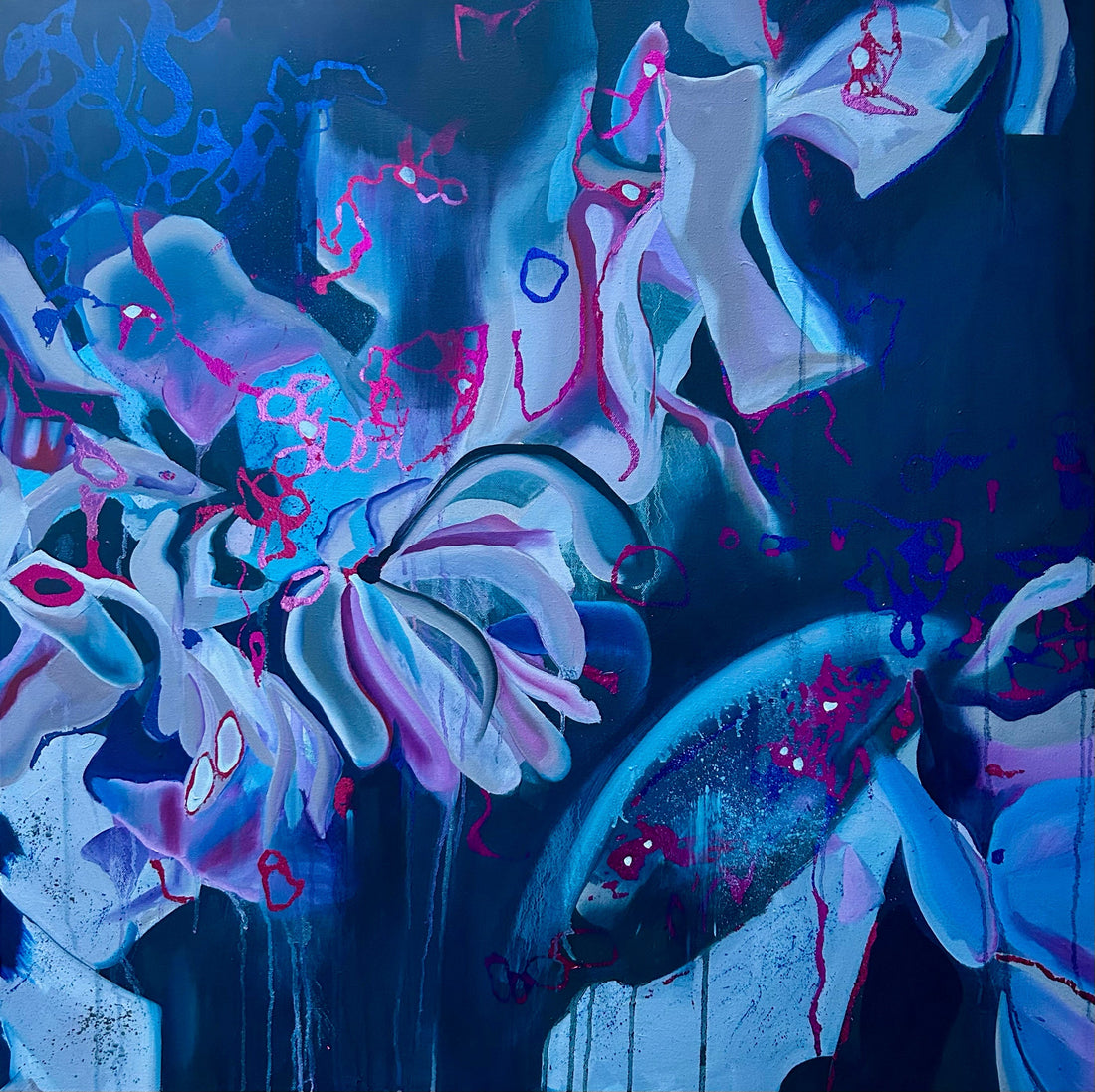Transitional Art expresses a passing of time, changes, or actual changes over time. The subject matter of this art can range from personal or societal changes to environmental shifts, reflecting an artist's or collective's journey through different states.
Themes in Transition Art often explore the idea of change in many forms. Some works depict natural and environmental transformations, such as shifting landscapes, the passage of seasons, or the effects of climate change. Others focus on human movement and history, illustrating cultural transitions, societal shifts, or personal journeys. Transition art can also reflect personal growth and identity, with artists expressing evolving perspectives, memories, or healing processes through their work. In addition, abstract approaches use forms, colors, and compositions to embody broader concepts of change, flow, and evolution.
For me, going through many changes is a current personal topic. I’m choosing to reflect the passing of time and changing feeling with layers, a more raw exposed texture that exposes the ergonomics of painting, so it has the process on show in layering paint and colours. Dark and light contrasts express mixed emotions of dealing with old and new.

Ruth Egon, (currently untitled), oil and foiling on canvas, 75cm x 75cm
Kinetic art refers to artwork that incorporates movement, whether real or implied. This motion may be generated by motors, wind, or even the participation of viewers. The term originates from the Greek word kinesis (meaning "movement") and gained prominence in the 20th century through artists such as Alexander Calder and Jean Tinguely. Examples range from wind-driven mobiles and motorized sculptures to paintings that create the illusion of motion, as seen in Bridget Riley’s work. By engaging viewers with shifting, dynamic experiences, kinetic art often symbolizes processes of change and transformation.

Ephemeral art is an art form that exists only temporarily, changing or disappearing over time. Created with the intention of being short-lived, it may decompose, melt, or otherwise vanish, rather than remaining as a permanent object. The movement gained recognition in the 1960s through groups such as Fluxus, highlighting the importance of process and the fleeting nature of experience. Notable examples include Andy Goldsworthy’s arrangements of natural materials like leaves and stones, Urs Fischer’s melting wax sculptures, and traditional sand mandalas. In ephemeral art, the viewer plays a crucial role: by witnessing and remembering the work, the audience helps preserve it in collective memory, ensuring its continuation beyond its physical disappearance.

For over three decades, Michal Rovner has explored themes of identity, displacement, and collective memory, creating works that blur the boundaries between past and present.

Sequential art refers to a series of artworks, or a single piece divided into sections, that illustrate a progression from one state or moment to another. Although comic strips are the most recognizable form of sequential art today, the practice predates comics by thousands of years. Humanity has long relied on images to share stories and convey information—even before the invention of written language.
The earliest known examples can be found in cave paintings, which used rudimentary visuals to communicate aspects of prehistoric life in a sequential manner. Later, Egyptian hieroglyphs offered a more refined and systematic form of visual storytelling, presenting organized depictions of daily life and culture.
